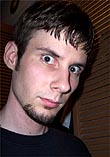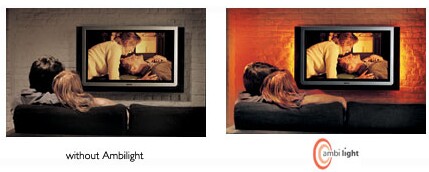|
|
This topic comprises 2 pages: 1 2
|
|
Author
|
Topic: Maximum acceptable FtLb value for ambient light at Screen?
|
Frank Angel
Film God

Posts: 5305
From: Brooklyn NY USA
Registered: Dec 1999
|
 posted 11-18-2004 04:56 PM
posted 11-18-2004 04:56 PM





In our newly renovated theatre, the incandescent 15w bulbs that were use in the original step light fixtures were replaced with compact fluorescence in an attempt to use a technology that would significantly reduce the replacement frequency of the bulbs. Problem is, the genius designers simply replaced the incandescents with the same wattage CF replacements as the original bulbs, i.e., 15w, which in fluorescent years is equal to something like 60w incandescent bulbs. This is WAY too bright. To make matters worse, the slots of the fixtures that house the bulbs (in the stair steps) do not mask the bulbs completely, letting some of the bulb's light shine unobstructed to the screen, i.e., line-of-sight. And there are a few dozen steps lit with CF bulbs. Oh, and Compact Flourescents cannot be dimmed.
We are obviously going to have to swap them out to something with a lot less light output, but the problem got me thinking -- is there a standard, possibly SMPTE or THX, which specifies the acceptable maximum amount of ambient light that can hit the screen....a maximum foot lambert value beyond which is unacceptable and which will ruin contrast ratio?
Before these brilliant architects and designers decide on what they are going to replace the bright CFs with, I want to be able to tell them that whatever they do, there is an aggregate amount of light that can't exceed X FtLb at the screen surface. I want to give them something to shoot for.
| IP: Logged
|
|
|
|
|
|
John Pytlak
Film God

Posts: 9987
From: Rochester, NY 14650-1922
Registered: Jan 2000
|
 posted 11-19-2004 06:05 AM
posted 11-19-2004 06:05 AM





If you can cast a distinct shadow on the unlit screen when the lights are set to the levels used during a show, you need to eliminate or shield the source of the stray light:
Conquering Contrast Killers
quote:
Contrast Killer 1: Auditorium Lighting
The first step in conquering contrast killers is to simply look at the "dark"
screen. Exit signs, aisle lighting, ceiling lights, wall lighting, and booth lights
should be set to normal show levels. The projector lamp should be on, but the
dowser closed. After taking about five minutes to let your eyes get used to the
low light level in the auditorium, look at the screen. Is it truly "black"? If not,
get on a stepladder or use a long pole to cast a shadow on the screen to
identify the source of stray light.
Exit signs are a necessary source of light that must sometimes be located near
the screen. Their brightness and color are strictly regulated by fire code. Their
purpose is to guide patrons to the exits in case of emergency. But nothing says they need to shine ON the screen. Usually, only a simple shield is needed
to keep their light from hitting the screen, without compromising their function
of clearly identifying the exits. The newer light emitting diode (LED) exit signs
offer the possibility of more directionality to the light, with less stray light on
the screen.
Aisle and step lights need to be bright enough to safely guide theatre patrons
to and from their seats in a darkened theatre. They DO NOT need to be bright
enough to guide a jet plane to a landing on a foggy runway. Adjust these
guide lights to the minimum brightness that ensures safety, without shining on
the screen or being a distraction in the darkened theatre.
Many theatres use a low level of ceiling illumination during the show for the
safety and security of their patrons. Care should be taken to shield the screen
from direct illumination from these overhead lights. Decorative lighting that
doesn't contribute to safety should not be used during the show.
Don't forget other sources of stray light that may shine on the screen,
including those that aren't constant. Does light from the lobby shine on the
screen every time someone walks into the theatre during a show? If this
design flaw was missed when the theatre was built, correct it now. Can work
lights in the booth ever shine on the screen? Make sure they don't. Are kids
with laser pointers a problem? Enforce a strict policy banning laser pointers,
and reward patrons that report perpetrators.
Consider the use of efficient long-lived LED cluster lamps rather than compact fluorescents:
http://www.theledlight.com/index.html
http://www.theledlight.com/120-VAC-LEDbulbs.html
quote:
3 and 6 LED bulb; 240 degree light spread; Medium Base low profile light, accent lighting, area night light. Both consume only 3.32watt/30mA at 120vac. Available in white LED only.
| IP: Logged
|
|
|
|
|
|
Steve Guttag
We forgot the crackers Gromit!!!

Posts: 12814
From: Annapolis, MD
Registered: Dec 1999
|
 posted 11-20-2004 02:07 AM
posted 11-20-2004 02:07 AM




1-fL has to mean reflected light...if it is directly measured (i.e. not off the screen) then foot-Labert is the wrong measurement. Output of light is in Lumens, light falling on an object is in foot-candles and only when you get to reflected light is it foot-laberts.
However, Dominic, I believe your interpretation is correct. The only way this can make sense is if one were to observe from the seating area any object or area should not read above 1fL if a light meter was pointed at it. That is, the object or lighted area should not be a distraction, even if it does not cast a significant amount of light on the screen.
I was recently at the Academy theatre in Beverly Hills...it is one of THE reference theatres for contrast ratio. It gets very dark in that theatre when the lights go down. The ceiling is black, the walls are grey (for the most part) and when the lights go out, your attention is very much drawn to the screen. The sound pretty much kicks butt too. Any way...I was somewhat surprised about these three columns on each side wall of the theatre. There were reflective and as action happened on the screen my eyes were constantly drawn to the columns as they flickered with reflected light from the screen...they were most annoying. I wouldn't be surprised that when white light was projected on that screen that one could easily measure 1fL off of those columns.
FWIW...I've also never seen a show where the picture was that sharp (and steady) from beginning to end...the joys of an EK print and a system that is tweeked up to look right with a very competent projectionist....and amazingly, no ads on the head of the show...another pleasent thing. I think the worst movie of all time would be enoyable in that theatre.
Back to contrast ratio...
Here is something people should know about the Digital projectors with their "contrast ratio" measurements
A typical theatre, according to standard should have a least a contrast ratio (maximum) of 400:1 with review rooms 600:1. Let me tell you those are some pretty dark rooms. Some of darkest rooms measured in this industry only yield a contrast ratio of 1000:1 (stray light can be measured to just .016fL.
Now how many of you have seen the specs of digital projectors that have 1000:1 and greater? How many of them have rather high blacks? As in, can you tell when you are outputting a black picture just by looking at the screen...even with the lights up? Even with cheap LCD projectors, according to the specs, you should be able to get away with projector with a 450:1 contrast ratio in a typical theatre....ever seen one of those? There are not any blacks.
How can this be? Because they lie about those contrast ratio specs as video has always deceived with their specifications. For contrast ratio, they use an "all pixels on, all pixels off" test to determine contrast ratio. It has no basis in reality. Some day soon, I hope the SMPTE publishes the contrast ratio measurement method and these digital projection systems will get a true measurement...the numbers will not be as rosey as their current figures would have you believe. Both the P-3 (projection technology) and DC-28 (Digital Cinema) committees are working on just such a uniform contrast measurement method.
Steve
| IP: Logged
|
|
|
|
|
|
Dominic Case
Expert Film Handler

Posts: 131
From: Sydney NSW Australia
Registered: Aug 2003
|
 posted 11-21-2004 04:20 PM
posted 11-21-2004 04:20 PM




quote:
only when you get to reflected light is it foot-lamberts.
Certainly, if you are talking about the light from a projector and a screen. But FtL are a measure of luminance, as John says - the same type of unit, as he also points out, as candelas per square meter, (and several other units). A reflective screen can be measured in the same units as a TV monitor (which is obviously a prime source, not a reflector).
But yes, Steve, I agree, that the point of this part of the spec is that lighted areas in the field of the audience's view should not be a distraction, and should not be brighter than a darkish grey (ie 1/16th, or 4 stops down)compared with screen white.
| IP: Logged
|
|
Frank Angel
Film God

Posts: 5305
From: Brooklyn NY USA
Registered: Dec 1999
|
 posted 11-23-2004 02:23 PM
posted 11-23-2004 02:23 PM





Yes, that nonsense about contrast ratio as touted by the lying video projector manufacturers -- that really needs to be whacked down. DLP projectors are routinely claimed to have contrast ratios of an amazing 2000:1! Imagine that -- more that four times the contrast ratio of film in a theatre! So Mr. Videophile trots on home with is $900 In-Focus DLP projector happily thinking his little unit is going to put film to shame, so golly-gee, there's no need to go to the cinema to see movies any more.
But then again, did we really ever expect manufacturers to actually tell the truth when there was an opportunity to do some serious hype?
But back to the theatre -- so 1ftL is for stuff that the patron can see from any sourch OTHER than what's going on on the screen. I got that. But my original question was, is there a spec for the actual screen. In other words, where when the theatre lighting is set as it would be for the film, and then you go up to the screen and take a measurement -- what is the max that reading should be? The you can say, yes the ambient light striking the screen is below an established acceptable level or no it's not.
I understand the hand/shadow test -- done it many times myself --but that doesn't help me much if I need to go to the archetect to say that his lighting fixture placement needs to be corrected. Much easier if I can go in and say, your lighting fixture placement produces xxftL light on the screen which is above spec. If I tell him, it makes a shadow on my hand, he will just laugh and say, so what.
| IP: Logged
|
|
|
|
|
|
William Hooper
Phenomenal Film Handler
Posts: 1879
From: Mobile, AL USA
Registered: Jun 99
|
 posted 11-26-2004 01:08 AM
posted 11-26-2004 01:08 AM





Frank:
As you know, architects hired to remodel theatres by non-profits or universities are almost never theatre architects, for a variety of reasons. What you wind up with is an architect who thinks a theatre is just a big room with seats in it, in which they feel they can express themselves & impress others with carpeting & lights.
You have to tell them that a theatre is a machine.
A machine is made of many essentil, independent mechanisms which must work together, & each of which must work itself. When you start arbitrarily tossing pieces out, it stops working.
I've seen a few that freak out & get defensive when things they've done don't work, make things worse, or suddenly become obvioulsy dumb.
At the next opportunity, I'd get them a copy of SMPTE's EG-18 - now that it's been withdrawn for sort of extraneous reasons, you may need to negotiate with someone nice like Steve Guttag to see if you can get a copy. Also, when you tell them about SMPTE Standard 196, direct them to SMPTE & have them BUY their copy of the standard. Sometimes, some folks don't think any information has any value until they must pay for it from some other established entity.
Architects have to get engineering studies & follow guidelines on structural designs, they farm out electrical & HVAC to consulting engineers, etc., but somehow everyone, even & sometimes especially architects, just go all euphoric & desirous only of self-expression through decoration when the project is a theatre. Somehow you've got to tell them to get over it; a theatre is a machine. There's a way it works, & it's got to work. Making it purty is only a small, although essential part of making it work. And that part goes on last. It hangs off the side, & is driven by the other mechanisms in the machine.
| IP: Logged
|
|
|
|
|
|
All times are Central (GMT -6:00)
|
This topic comprises 2 pages: 1 2
|
Powered by Infopop Corporation
UBB.classicTM
6.3.1.2
The Film-Tech Forums are designed for various members related to the cinema industry to express their opinions, viewpoints and testimonials on various products, services and events based upon speculation, personal knowledge and factual information through use, therefore all views represented here allow no liability upon the publishers of this web site and the owners of said views assume no liability for any ill will resulting from these postings. The posts made here are for educational as well as entertainment purposes and as such anyone viewing this portion of the website must accept these views as statements of the author of that opinion
and agrees to release the authors from any and all liability.
|

 Home
Home
 Products
Products
 Store
Store
 Forum
Forum
 Warehouse
Warehouse
 Contact Us
Contact Us




 Printer-friendly view of this topic
Printer-friendly view of this topic







![[Eek!]](eek.gif)





![[Smile]](smile.gif)



